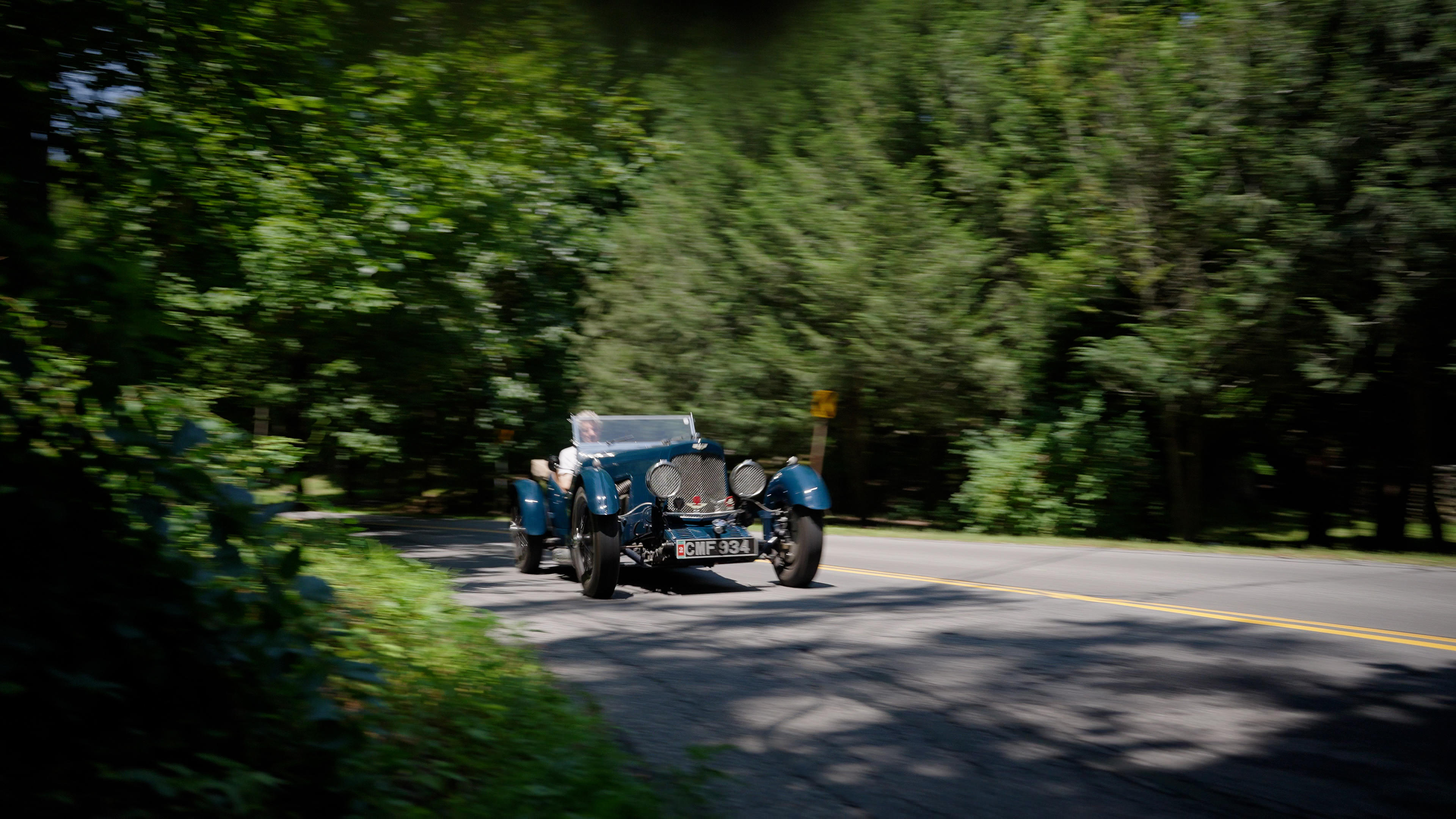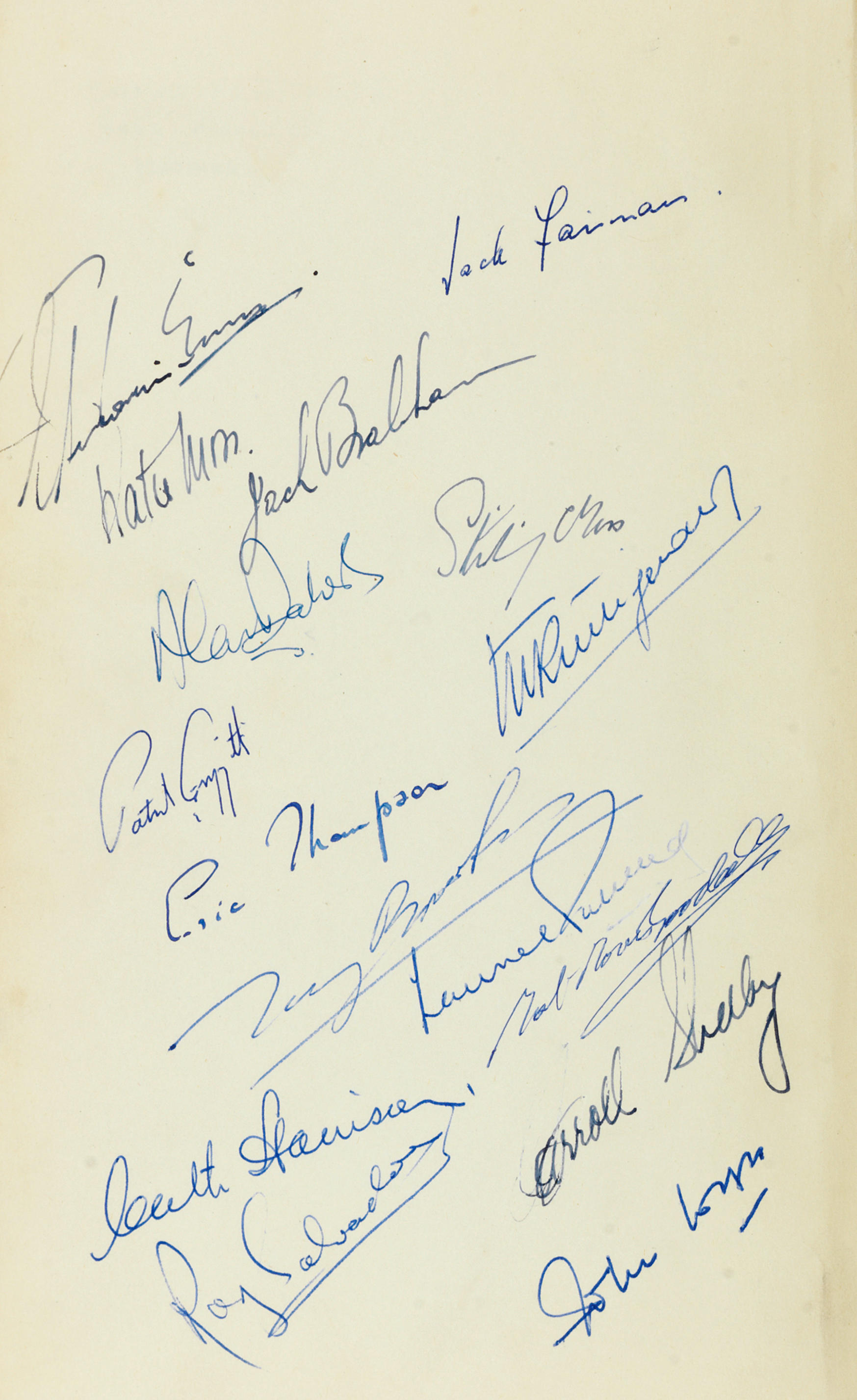1,495cc SOHC Inline 4-cylinder Engine Twin SU Carburetors 73bhp at 4,750rpm 4-speed manual transmission Semi-elliptic leaf springs front and rear 4-wheel hydraulically assisted drum brakes *Desirable Sporting 1930s Aston Martin *Long term custodianship of comedian Bill Cosby *Former ownership of Cosby's friend Bill Harrah The Aston Martin MkII Big-car enthusiasts are apt to think that effortless, fast touring is a quality exclusive to vehicles of high horsepower rating, but their views will be considerably altered after they have taken the Aston Martin over a 300 mile journey.' Motor Sport magazine on the Aston Martin MkII. Manufactured by Robert Bamford and Lionel Martin, the first Aston-Martins (the hyphen is correct for the period) rapidly established a reputation for high performance and sporting prowess in the years immediately following The Great War. Unfortunately, the management's concentration on motor sport, while accruing invaluable publicity, distracted it from the business of manufacturing cars for sale, the result being just 50-or-so sold by 1925 when the company underwent the first of what would be many changes of ownership. The foundations were laid for the commencement of proper series production with the formation of Aston Martin Motors Ltd in 1926 under the stewardship of Augustus 'Bert' Bertelli and William Renwick. Bertelli was an experienced automobile engineer, having designed cars for Enfield & Allday, and an engine of his design - an overhead-camshaft four-cylinder of 1,492cc - powered the new 11.9hp Aston. Built at the firm's new Feltham works, the first 'new generation' Aston Martins were displayed at the 1927 London Motor Show at Olympia. Like his predecessors, 'Bert' Bertelli understood the effect of competition success on Aston Martin sales and sanctioned the construction of two works racers for the 1928 season. Based on the 1½-litre road car, the duo featured dry-sump lubrication – a feature that would stand them in good stead in long distance sports car events – and this was carried over to the International sports model, newly introduced for 1929. Built in two wheelbase lengths (8' 6" and 9' 10") the International was manufactured between 1929 and 1932, mostly with bodies by Augustus's brother Enrico 'Harry' Bertelli. The 'Le Mans' label was first applied to the competition version of the (1st Series) International following Aston's class win and 5th place overall in the 1931 Le Mans race. This conceit was fully justified when the model placed 5th and 7th in the 1932 race and collected the Rudge-Whitworth Biennial Cup. It may, in fact, be the first car named after the Le Mans Race, although many others have since followed Aston Martin's example. The early 1930s was a period of economic recession and with sales of expensive quality cars falling off, some serious rethinking had to be done at Feltham. The prudent decision was taken to redesign the International chassis using proprietary components to reduce cost. A Laycock gearbox was adopted, mounted in unit with the engine, and the worm rear axle, which had never been completely satisfactory, was replaced by an ENV spiral bevel. There was a redesigned chassis frame and many other modifications resulting in what was virtually a new car, although it carried the same coachwork and was sold as the 'New International'. The original line-up of what would become known as the '2nd Series' did not last long, the New International and two-seater Le Mans disappearing from the range before the end of 1932. That year's Motor Show had ushered in the more familiar Le Mans 2/4-seater, which was also available on the long chassis as the Le Mans Special four-seater. Introduced in 1934, the replacement Mark II model sported a new, stronger chassis and a revised engine with counter-balanced crankshaft. Short (8' 7") and long (10') wheelbase versions were built, the latter available with stylish four-seater sports saloon coachwork by Enrico Bertelli. Priced at £700,
1,495cc SOHC Inline 4-cylinder Engine Twin SU Carburetors 73bhp at 4,750rpm 4-speed manual transmission Semi-elliptic leaf springs front and rear 4-wheel hydraulically assisted drum brakes *Desirable Sporting 1930s Aston Martin *Long term custodianship of comedian Bill Cosby *Former ownership of Cosby's friend Bill Harrah The Aston Martin MkII Big-car enthusiasts are apt to think that effortless, fast touring is a quality exclusive to vehicles of high horsepower rating, but their views will be considerably altered after they have taken the Aston Martin over a 300 mile journey.' Motor Sport magazine on the Aston Martin MkII. Manufactured by Robert Bamford and Lionel Martin, the first Aston-Martins (the hyphen is correct for the period) rapidly established a reputation for high performance and sporting prowess in the years immediately following The Great War. Unfortunately, the management's concentration on motor sport, while accruing invaluable publicity, distracted it from the business of manufacturing cars for sale, the result being just 50-or-so sold by 1925 when the company underwent the first of what would be many changes of ownership. The foundations were laid for the commencement of proper series production with the formation of Aston Martin Motors Ltd in 1926 under the stewardship of Augustus 'Bert' Bertelli and William Renwick. Bertelli was an experienced automobile engineer, having designed cars for Enfield & Allday, and an engine of his design - an overhead-camshaft four-cylinder of 1,492cc - powered the new 11.9hp Aston. Built at the firm's new Feltham works, the first 'new generation' Aston Martins were displayed at the 1927 London Motor Show at Olympia. Like his predecessors, 'Bert' Bertelli understood the effect of competition success on Aston Martin sales and sanctioned the construction of two works racers for the 1928 season. Based on the 1½-litre road car, the duo featured dry-sump lubrication – a feature that would stand them in good stead in long distance sports car events – and this was carried over to the International sports model, newly introduced for 1929. Built in two wheelbase lengths (8' 6" and 9' 10") the International was manufactured between 1929 and 1932, mostly with bodies by Augustus's brother Enrico 'Harry' Bertelli. The 'Le Mans' label was first applied to the competition version of the (1st Series) International following Aston's class win and 5th place overall in the 1931 Le Mans race. This conceit was fully justified when the model placed 5th and 7th in the 1932 race and collected the Rudge-Whitworth Biennial Cup. It may, in fact, be the first car named after the Le Mans Race, although many others have since followed Aston Martin's example. The early 1930s was a period of economic recession and with sales of expensive quality cars falling off, some serious rethinking had to be done at Feltham. The prudent decision was taken to redesign the International chassis using proprietary components to reduce cost. A Laycock gearbox was adopted, mounted in unit with the engine, and the worm rear axle, which had never been completely satisfactory, was replaced by an ENV spiral bevel. There was a redesigned chassis frame and many other modifications resulting in what was virtually a new car, although it carried the same coachwork and was sold as the 'New International'. The original line-up of what would become known as the '2nd Series' did not last long, the New International and two-seater Le Mans disappearing from the range before the end of 1932. That year's Motor Show had ushered in the more familiar Le Mans 2/4-seater, which was also available on the long chassis as the Le Mans Special four-seater. Introduced in 1934, the replacement Mark II model sported a new, stronger chassis and a revised engine with counter-balanced crankshaft. Short (8' 7") and long (10') wheelbase versions were built, the latter available with stylish four-seater sports saloon coachwork by Enrico Bertelli. Priced at £700,















Testen Sie LotSearch und seine Premium-Features 7 Tage - ohne Kosten!
Lassen Sie sich automatisch über neue Objekte in kommenden Auktionen benachrichtigen.
Suchauftrag anlegen